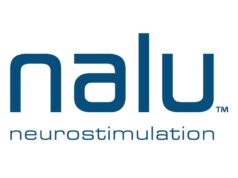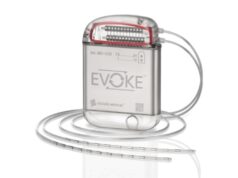
An international, multicentre study has confirmed the existence of the carryover or ‘echo’ effect—an interval before patients perceive the return of pain after their spinal cord stimulation (SCS) system has been deactivated—and also indicated a “remarkably high” degree of variation between individuals regarding this phenomenon.
Kaare Meier (Aarhus University Hospital, Aarhus, Denmark) and colleagues, who recently published these findings from the EChO study in the journal Neuromodulation: Technology at the Neural Interface, state that their results suggest the magnitude of carryover may be correlated to the nature of the pain condition and, possibly, stimulation paradigms as well. The authors also highlight cyclic stimulation approaches, crossover study designs and optimisation of SCS therapies as areas where their findings may have impactful implications.
“It has long been assumed that, when deactivating SCS, there is a variable interval before the patient perceives the return of the pain—a phenomenon often termed echo or carryover effect,” Meier and colleagues initially relay. “Although the carryover effect has been problematised as a source of error in crossover studies, no experimental investigation of the effect has been published.”
With this gap in the current literature in mind, researchers conducted the open, prospective, international, multicentre EChO study in an attempt to systematically document, quantify and investigate the phenomenon of the carryover effect in chronic pain patients receiving SCS therapy.
The rationale for the study was relatively simple: eligible patients whose SCS treatment had a beneficial effect were instructed to deactivate their device in a home setting, and to reactivate it when their pain returned. The study’s primary outcome was the duration of carryover time, defined as the time interval from deactivation to reactivation. Meier and colleagues note that central clinical parameters—including age, sex, indication for SCS, SCS treatment details and pain score—were registered and correlated with carryover time using nonparametric tests for categorical data, and linear regression analysis for continuous data.
A total of 158 patients from nine European centres, and one in Canada, were included in EChO analyses between April 2018 and March 2021. Across these patients, a median carryover time of five hours (interquartile range, 2.5–21 hours) was found. Tests comparing patient subgroups found some notable, statistically significant differences: those with complex regional pain syndrome (CRPS) displayed the shortest carryover time, and those with back pain experienced the longest, while patients with radicular pain, painful neuropathy and peripheral nerve damage pain showed carryover times between these two extremes.
Meier and colleagues relay that a higher pain score at the time of SCS deactivation was correlated with longer carryover time, but that this correlation was not replicated in linear regression analyses. Patients receiving high-frequency (10kHz) stimulation also experienced statistically significantly longer carryover effects than those on tonic or burst stimulation therapies—although the authors note, on this point, that patients treated with high-frequency stimulation only constituted a small fraction of the included patients, and had a higher proportion of back pain patients as a possible confounder.
Among other key findings of EChO’s analyses was the fact that SCS lead location did not seem to be a predictor for any change in carryover time. In addition, neither the age of the patients, nor the duration of their painful condition or SCS treatment, was associated with carryover time. Here, the authors also note that SCS patients with previous experience of rapid pain onset after deactivation may be less inclined to participate, leading to overestimation of the carryover time. Finally, regarding safety outcomes, the authors report that no adverse events were recorded in the study.
“This study is, to our knowledge, the first to investigate the carryover effect in SCS in an experimental setting,” Meier and colleagues write in summary. “The data presented here confirm the existence of a carryover effect, quantify the duration of the carryover effect, and investigate possible correlations with clinical parameters. In our study population, there was a remarkably large interindividual variation among patients with SCS, with a significant fraction of patients having carryover duration of >24 hours—a finding with both clinical and profound scientific implications.”









